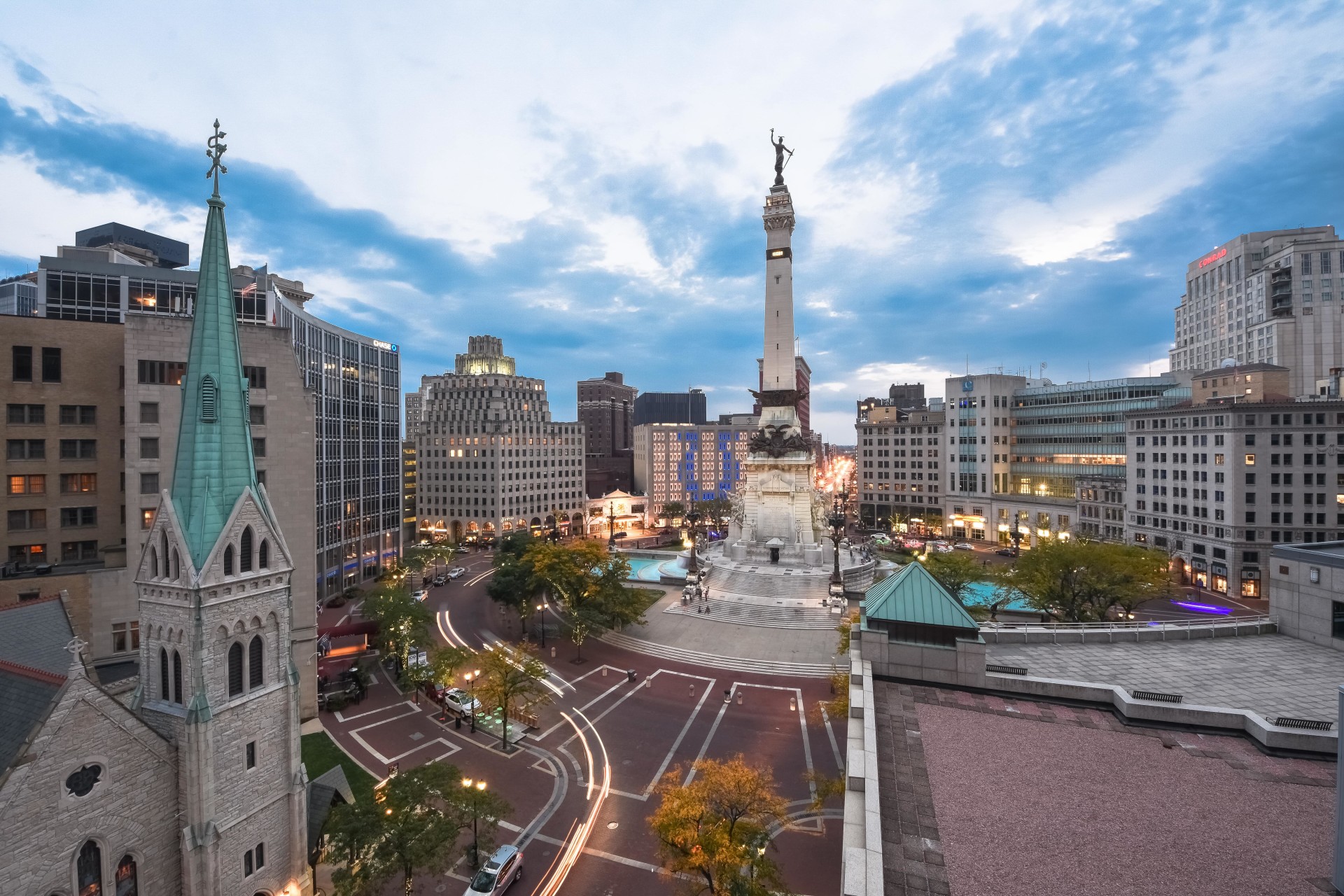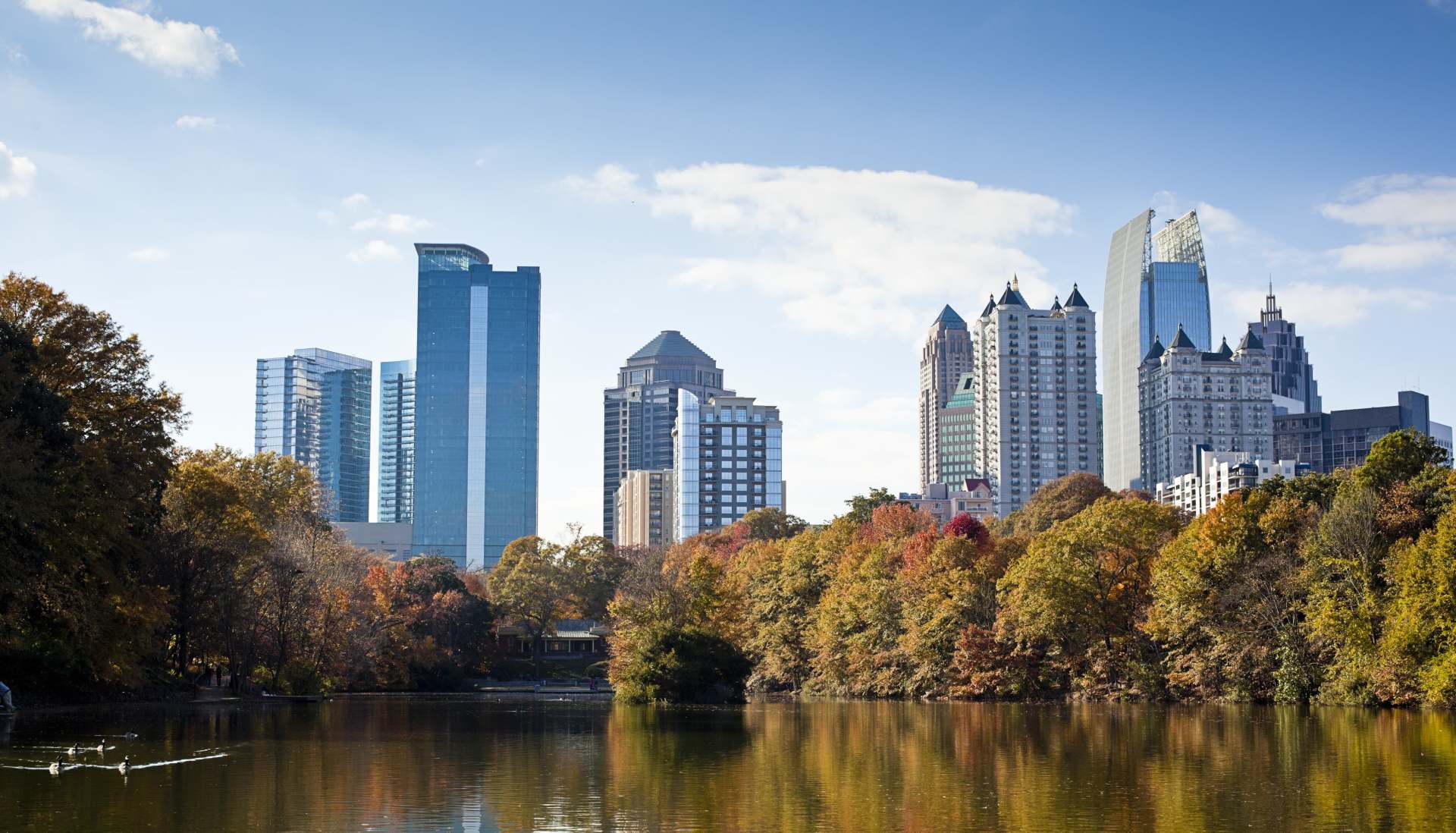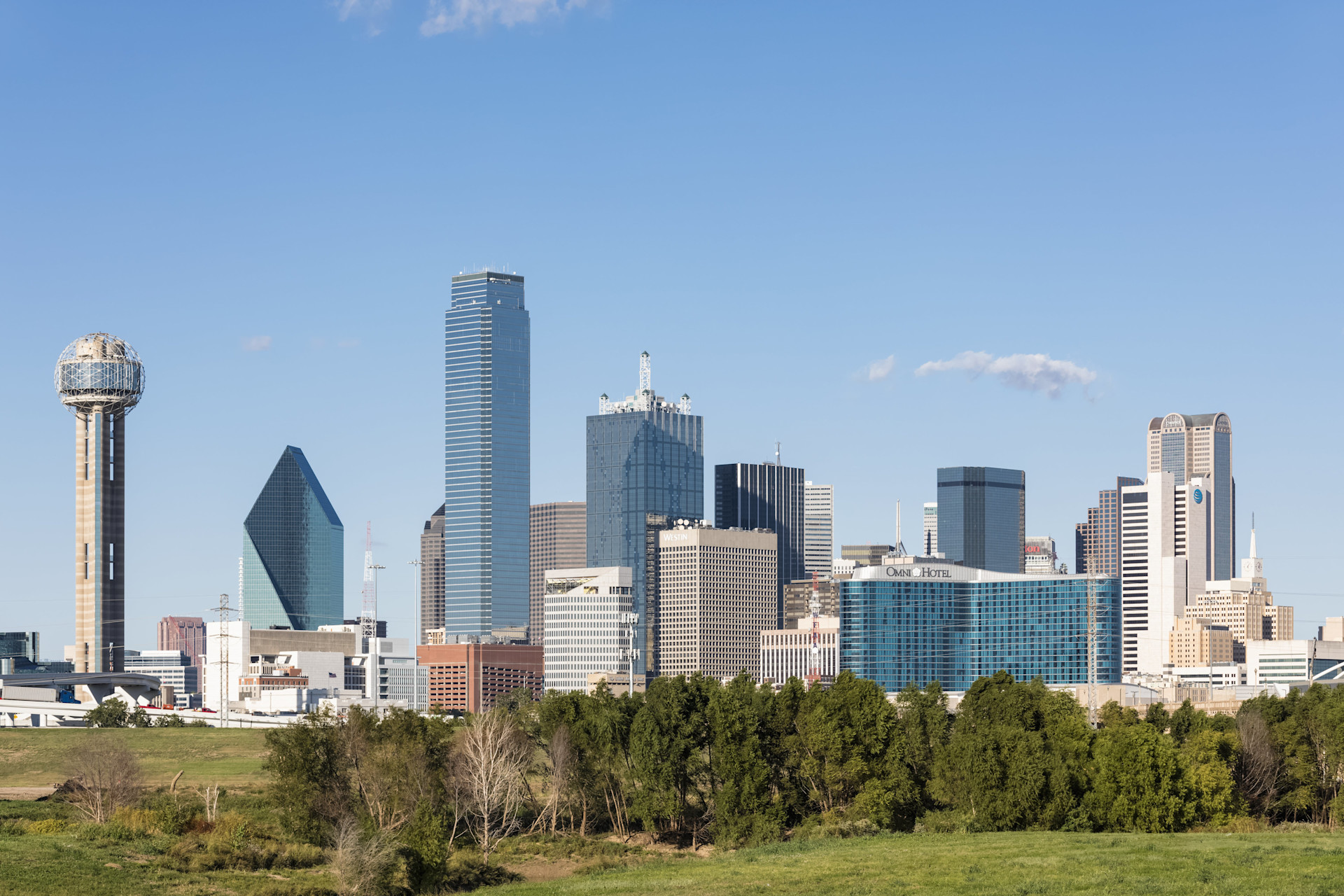“Where will I go on my mission?” sings the young Elder Price in the smash hit Broadway musical “Book of Mormon.” It’s the most important part of a Mormon kid’s life, he sings, nothing less than a chance to “heal the world.”
“It could be San Fran by the Bay, or Australia, where they say g’day,” he sings. “But I pray I’m sent to my favorite place!”
… which is …
“Orlando! I love you, Orlando! SeaWorld and Disney! Putt-putt golfing!”
The city is played as a punchline, but like Elder Price, millions of people (Mormon and otherwise) find Orlando plenty alluring, what with the warm climate and the state charging no income tax, inheritance tax, or estate tax. (Locals also get steep discounts at those theme parks, which appeals to some, probably more so to families with kids.)
The metropolitan area population has increased by about 20 percent since the 2010 Census, to some 2.7 million, making it the third-largest metro area in Florida and the seventh-largest in the Southeast.
According to the Orlando Economic Partnership (OEP), the city has added more than 1,000 people per week since before 1950, making it one of the fastest-growing regions in the country for decades now.
All those newcomers have heated up the housing market.
- As of June, the median home listing price is $401,900, up 26.5 percent year-over-year, according to Realtor.com.
- The median home sale price was $385,000, up 21 percent year-over-year, per Realtor.com.
- Median days on market in June 2022 was 42, down 4 days year-over-year.
- Median rent on a single-family home in June was $1,953, up 13.9 percent year-over-year.
“Our market hasn’t changed,” says Lisa Hill, a realtor with Keller Williams. “It was hot before the pandemic and it’s still hot. In 2019, we were already extremely busy and had low inventory.”
And she never got a break.
“When everything was going into lockdown, realtors were considered essential workers, so we never missed a beat,” Hill added. “It even got busier. I was doing open houses and showings virtually, and in August 2020 I closed nine properties, mostly virtually.”
The pandemic hit sunny Orlando hard
The PriceWaterhouseCoopers and Urban Land Institute’s report “Emerging Trends in Real Estate 2022” ranks Orlando #18 in overall prospects and #22 in homebuilding prospects among the nation’s top 80 cities. The report gives multifamily properties a 69 percent “buy” and 19 percent “hold” rating.
“Orlando's recovery has come a long way over the past year,” observes Emily Mandel, an economist with Moody’s. “As the pandemic has faded into the background and tourism has come roaring back, Orlando has made up for lost time. Its recovery is now ahead of the nation's, if still a step behind the Florida average.”
Mandel sounds a note of caution related to inflation.
“While the economy's made significant progress, there are still some points of concern, particularly around costs,” she said. “Higher prices nationally, including expensive airfares and gasoline, could put a dent into the recovery in tourism.
“In addition, housing affordability has really eroded across Florida,” she added, “including in Orlando, which could reduce migration into Orlando and slow the economy's growth.”
Hill, who has lived in the city for all of her 60 years, is bullish.
“Honestly, our hospitality industry was hit pretty hard,” she said. “When you see Disney and all the attractions closing, that’s a lot of people furloughed.
“However, they’re bouncing back at full throttle, so most of those people who were furloughed are back to work now,” she added. “For the next few years, our biggest job growth is going to be hospitality, followed by professional and business services.”
Orlando’s rental market is as hot as the real estate market
Local headlines have reported on rents “skyrocketing” to “unheard-of” levels.
Already in 2019, Freddie Mac found that Orlando was the fifth-most rent-burdened city in the union. And that was before the pandemic-era influx of people seeking warm weather and more space, and fleeing higher taxes in states like New York and California.
Orlando has seen some of the most rapid rent increases in the country, with Orange County rents rising an average of 30 percent.
When taking incomes into account, a Bloomberg study found rents less affordable than in the notoriously pricey Bay Area.
“Our rental market is as hot as our sales market,” says Hill. “You go to an area where in the past you could find 10 or 15 properties for rent, and now you’re lucky if there are one or two. And the average rent for a three-bedroom, two-bathroom apartment is $2,300 a month.”
Rapid growth also spells trouble for an already crowded infrastructure. Locals complain that public transportation is not what it should be for such a large city, and that the roads are congested and not bike- or pedestrian-friendly.
On the upside, the city will soon become better connected to the region, with a rail line connecting to Miami, Fort Lauderdale, and West Palm Beach coming in 2022.
A military post turned theme park hotspot
Originally inhabited by Timucua and Seminole peoples, the area now known as Orlando was first occupied by European settlers around 1843, when they built Fort Gatlin. The city was first dubbed Jernigan, after a prominent family in the area.
As for its name thereafter, things get amusingly hazy. Some say a local judge named it for a character in Shakespeare’s As You Like It (source of the famous line “All the world’s a stage, and all the men and women merely players”). Another account says it’s named for a sentinel who warned his fellow soldiers of an attack by Seminole Indians.
Yet another, doubtless more fanciful, has a certain Mr. Orlando dying and being buried there, so that thereafter, people would pass by and say, “There lies Orlando.”
Among the region’s early industries were cotton, cattle, and citrus. The 1950 opening of the Cape Canaveral aerospace complex on the Atlantic coast 50 miles to the east spurred further growth, but the area’s true titan splashed down in 1971: Walt Disney World, which encompasses the Magic Kingdom (home to the iconic Cinderella’s Castle), Epcot, Disney-MGM Studios, and Animal Kingdom.
Dozens of attractions, millions of visitors
Universal Orlando Resort, featuring Universal Studios (home to a new roller coaster themed on Jurassic World) and Islands of Adventure, threw open its doors in 1990; the park now features the Wizarding World of Harry Potter.
While the city is currently home to dozens of theme parks, Walt Disney World remains the greatest. It’s so large that the entire city of San Francisco could fit inside its walls, and in 2019, the year before the pandemic hit, it saw a whopping 21 million visitors (almost three times the population of New York City).
The city overall welcomes some 70 million visitors a year — a little more than the population of the United Kingdom.
Big-league sports, a film festival, dance, theater and art
Big-league sports teams have followed the city’s burgeoning population. Local fans follow the two-time NBA finalists the Orlando Magic, its ice hockey team, the Solar Bears (get it?), the Orlando City Soccer Club, and the city’s women’s football team, which surely has one of the most punk rock names in professional athletics: the Orlando Anarchy.
Those interested in more highbrow entertainment appreciate the Orlando Film Festival, which is dedicated to independent filmmakers, as well as attractions like two ballet companies, a Shakespeare company, and the Orlando Museum of Art.
The city has a diverse population and a welcoming environment. It’s known for a large LGBTQ population. (Tragically, the city was the site of the 2016 mass shooting at the Pulse nightclub.) Disney World offers Gay Days and hired Black Santas for its Orlando theme park for the first time in 2021.
There’s also a Bible-based theme park not far from a supersized Baptist church. The Orlando Economic Partnership reported that in the last decade, one in nine residents had migrated to the city, half of them from another country, spelling major increases in ethnic and racial diversity.
Outside tourism, aerospace and tech
The city led the nation in job growth from 2014 to 2018, and the Orlando-Kissimmee-Sanford metropolitan area accounted for some 13 percent of the state’s GDP in 2017, according to the Orlando Economic Partnership.
Beyond the theme parks, Orlando is home to a robust corporate environment, partly based in aerospace and defense. The 1,000-acre Central Florida Research Park, adjacent to the University of Central Florida, hosts some 125 companies and about 10,000 employees. Tenants include AT&T, Boeing, Cisco Systems, Hewlett-Packard, Northrop Grumman, and Raytheon.
Tech is establishing a foothold as well, with companies following the Kennedy Space Center and Army, Navy, and Air Force simulation command centers. Among other contenders are video game company Electronic Arts, lidar (light detection and ranging) startup Luminar, and credit card payment servicer Stax.
About 20 miles to the east of Disney World, in a neighborhood by the Orlando International Airport is the 17-square-mile Lake Nona planned community, which hosts a training center for Big Four accounting firm KPMG, the USTA’s national campus, the University of Central Florida Health Sciences Campus, and the Nemours Children’s Hospital.
“Disney obviously put us on the map, and in the past, yes, we had a reputation as just the theme park capital, but that is changing,” says Hill. “The University of Central Florida is one of the largest colleges in the country, and we’re getting on the map for technology with NeoCity, which will be the next Silicon Valley.”
The market is also attracting outside money.
“Investors are coming here, buying properties because it’s still affordable and they can get high rents,” Hill added. “I’m starting to see international buyers come back into the market.”
There is no stopping Disney, or Orlando
And the tourism industry looks like it has room to grow. Disney is building a new regional campus near the airport to house at least 2,000 digital technology, finance, and product development employees who will relocate from Southern California.
The Magic Kingdom isn’t the only place in Orlando where fantasy reigns. Like many locales wanting to lure Hollywood money, Orlando has hosted some movie productions, among them The Waterboy, Sharknado 3: Oh Hell No!, Monster, and Lethal Weapon 3.
Despite a glitch in its tourist-driven economy, Orlando is projected to attract more than 1,500 new residents every week for the next 11 years, eventually growing to more than 5.2 million, per the Orlando Economic Partnership.
Local developer Fletcher Moore recently told the Tampa Bay Times that he sees signs that Tampa and Orlando, separated by about 100 miles along Interstate 4, could soon be like Fort Lauderdale and Miami, which were once uneasy neighbors but are now almost indistinguishable.
Everything between Orlando and Tampa “used to be green cow pastures,” Moore said. “But today, it’s hard to find land.”



